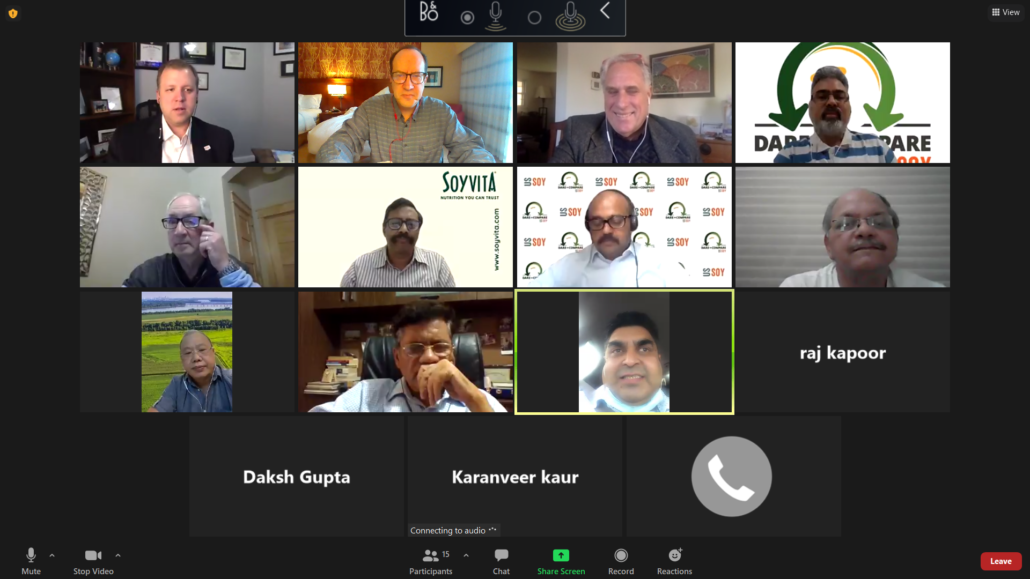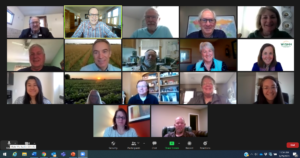This monthly feature from SSGA’s Agronomy Action team highlights growing conditions for Identity Preserved crops from different regions around the country. Thanks to the states/regions that have contributed so far. If you would like to contribute, please get in touch with us by emailing David Kee or Shane Frederick.
Illinois
Illinois has seen quite a variation across the state in planting conditions and planting progress.
As with most years, many growers in the eastern part of the state have completed 100% of their planting. Progressing west, that dwindles to about 25% complete. Corn and soybeans went in around the same time, as there has been much press recently about planting soybeans early. No doubt the northern Illinois sees that advantage. Moving south, especially south of I-64, the results have been a little more inconsistent.
The crop has been slow to emerge with the cooler–than–normal temps. Coming out of Mother’s Day weekend, some areas to the north reported widespread frost. Overall stand establishment has been in the adequate range so far. A few areas have caught heavier rainfall events, and there could still be some replant decisions to be made in the next week or two. The emerged crop needs sunshine and heat. Once the temps go up and the clouds disappear, this crop will respond with some pretty extraordinary growth.
The wheat crop began pollinating in the south at the beginning of last week. The maturation line will progress north at about 75-100 miles per week. So, what happened in Cairo last week will happen in Springfield next week. Many growers in these pollinating areas have been busy applying fungicides for Fusarium Head Blight, a potentially devastating disease. As with most fungicide applications, we are betting on conditions post-application to see if the pathogen will be at economic levels. Although the temperatures were a touch lower than optimum for fusarium, we definitely had a conducive environment from a moisture standpoint.
Michigan
The Michigan soybean crop is off to a strong start this spring. About one-third of the expected 2.5 million acres have been planted as of the first week of May which is about 25% ahead of the five–year average. Some of these acres were planted very early (late March and early April). Most of those are just now emerging, while some emerged previous to a couple nights of temperatures in the low 20s. It is interesting to continue to learn about the ability of soybeans to handle cold temperatures,. In most cases they are more hardy and resilient that previously thought.
Field conditions at planting have been very good in most fields with less soil moisture than normal. For some droughty soils, this is a little concerning as soil moisture at the seed level may not be adequate for germination. Other fields that normally struggle with excessive moisture are near ideal in planting conditions.
Strong soybean market prices and a good start to the planting season have built an optimistic outlook for the industry in 2021.
Minnesota
Minnesota farmers are busy planting! Planting progress of most crops is slightly behind 2020 but well ahead of the five-year average. Minnesota’s drought–impacted area (D0-D3) has shrunk from 87% of the state (mid-April) to 37% in mid-May. In the first week of May, soil temperatures, at 4–inch depth, ranged in the low to high 40s (oF) in the north (Crookston) and upper 40s to mid 60s in the south (Lamberton).
Reports are that crop emergence of early planted fields are somewhat variable, but emergence is improving rapidly as soil temperatures rise. Due to the excellent planting conditions (dry soil) seedling disease issues are not currently common, however, farmers frequently report concerns with pre-emergent herbicide efficacy and thus future weed control issues. Tillage decisions are critical as it impacts management of three variable issues: residue, emerging weeds and soil moisture. Optimal management of all three will impact yield and crop quality.
More information: USDA NASS Minnesota Crop Progress & Condition
Missouri
April did turn out to be a wet month for Missouri. It also ended up being a bit of a temperature roller coaster. Missouri had an average temperature of 54.5°F, which was 1.1°F below average. A cold snap with freezing temperatures did happen on April 21-22, causing vegetative growth damage, plus forage crop lodging. The statewide rainfall total was 4.76 inches. More details on our climate for the month of April can be found here.
Heading into the last week of April and first few days of May, there was a big rush for corn planting due to favorable temperatures and soil conditions. We also can attribute this to our large–scale planting equipment placing many rows of corn in the ground per pass. We are still behind our five-year average for corn acres being in the ground. Our average is 62% planted, but we saw only around 50%. Only 15% of this year’s corn has emerged. Soybean planted equated to 10% complete, compared to the five-year average of 8% at this time. An estimated 2% of soybean had emerged by May 2. Around 65% of the Missouri rice crop has been planted, and cotton planting was only 3% completed as of May 2. Winter wheat was 31% headed, and the crop was rated 5% poor, 36% fair, 53% good and 6% excellent. However, the soft red winter wheat in Central Missouri has not begun to head but is at flag leaf to boot stage (Feekes 8 to 10) with serious wheat producers using targeted fungicide for scab (FHB).
More information: USDA NASS Missouri Crop Progress & Condition
North Dakota
North Dakota is extremely dry, and a nice general rain would help the crops germinate. The dry and cold conditions are slowing emergence of small grains and early seeded corn.
Corn planting is progressing rapidly and at around 40% statewide.
Sugarbeet planting is at 85% or greater.
Wheat planting is at 90%
Barley planting is at 75%
Soybean planting is at 10%
With the dry conditions planting can progress quickly.


 The two groups were joined by ASA
The two groups were joined by ASA 

